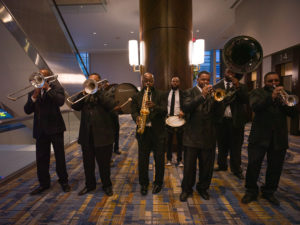The University of St. Thomas is introducing a new nursing program, known as the Accelerated Bachelor of Science in Nursing (ABSN) and the first group of students will begin fall 2020, according to UST Senior Nursing Admissions Counselor Sara Johnson.
Johnson said the 12-month accelerated hybrid program is designed for non-nursing or non-STEM major students who have either changed their mind about their current career choice and want to pursue nursing or want a second bachelor’s degree. The program, she said, will accept 20-25 students three times a year.
Johnson said the program is split into three 15-week-long semesters where students rotate through lectures, labs and online coursework.
UST Assistant Nursing Professor Kristina Leyden said the course will be offered at UST’s planned Conroe location to accommodate the large number of students expected to enroll. Johnson, meanwhile, confirmed that the ABSN students will do their lab coursework at a learning center in The Woodlands.
“I think the offering of the accelerated bachelors meets the unique student’s need, especially for someone who already has a bachelor’s degree,” Leyden said.
However, some students said they prefer the normal three-year track instead of the ABSN.
UST sophomore nursing major Alexis Romano said she objects to the new accelerated BSN track.
“I don’t think you can fit that much knowledge or information in the 12 months that we do in three years,” she said.
Although the ABSN track is shorter than the BSN program, Johnson said the new program will not be “cutting any corners.” She said all nursing students will have to learn the same amount of information.
Leyden agreed. “We are not skipping material or simulation time or content; it’s just heavier,” she said.
The new ABSN program, however, would attract more students according to Johnson because it takes less time to complete.
UST junior nursing major Gisset Romero said she has friends in the University of Texas Health Center 15-month program which is a similar program to UST.She said she believes it still isn’t enough time to properly prepare the students for a nursing career.
“We get two and a half years of clinicals; they would get 12 or six months of clinicals,” Romero said. “It’s not the same as being prepared [as regular BSN students].”
Johnson acknowledged that the program is “not for everyone.”
“However, I think we positioned ourselves to aid a population of students who this would be a good fit for,” she said.
Junior nursing major Alejandro Duran said he was unsure about the new program, but said it could be a positive addition to the nursing department.
“I don’t see it as a bad thing,” Duran said. “Nursing is a calling, so if that’s what you wanna do, and you’re capable of doing it, then go for it.”
Duran, Romero and Romano, however, all said they would have still followed the traditional BSN track even if the ABSN track had been offered when they first enrolled at UST.
Had he taken the ABSN, “I don’t think I would be prepared by the end of that year,” Duran said.





Be First to Comment